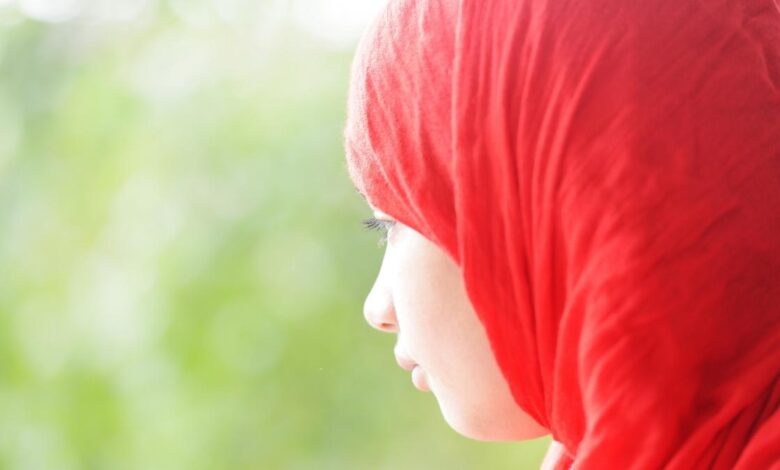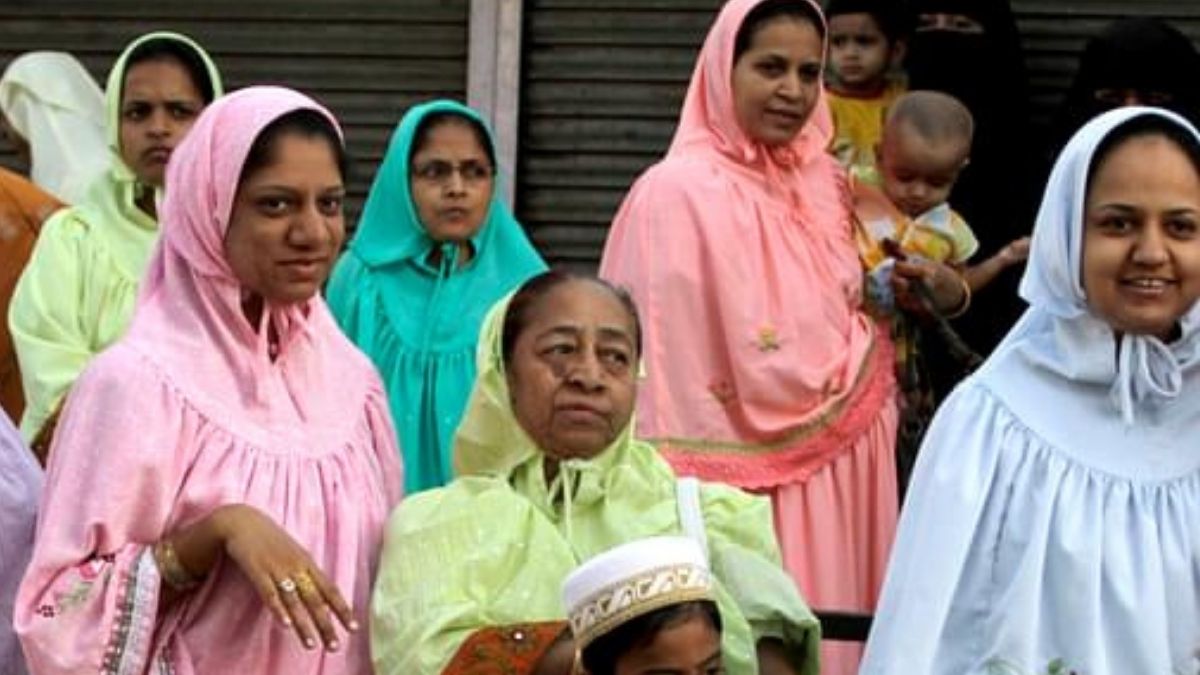Khatna: This nick in a young girl’s skin is much more than a religious and a social norm

The secrecy maintained around Female Genital Cutting (FGC) or Khatna by the Dawoodi Bohra community clubbed with lack of data is delaying its ban in India. Sahiyo founder discusses the impact and ban of khatna with Digpu.
Imagine being taken to a dark and non-descript room where an old female waits for you. Your female relative (mother or grandmother) is accompanying you and asking you to be calm while undergoing the process of Khatna or Female Genital Cutting (FGC).
Now, imagine your mother or granny calming you down by saying that it will be fine in a jiff while you are shrieking in fear, anticipating the pain that you will experience when that old and not medically-trained lady will slice your clitoris with a hot knife or blade.
In a research published by Sahiyo, an organisation working towards banning FGC has cited that around 80% of women in the Dawoodi Bohra community have undergone the process of Khatna, the colloquial name of FGC.
On the positive side, around 82% of the respondents have said that they will not let their girl child go through the process. But the broad question remains unanswered – how will we stop this practice or eradicate it from our society.
What is Khatna? Who are Dawoodi Bohras?
Khatna or Khafz, as called colloquially, is a process of castrating women’s genitals (specifically the clitoris) to moderate their sexual desires, which were thought to be evil, and hence curbed. In an article, one of the co-founders of Sahiyo, Priya Goswami stated how the clitoris was viewed as the root of the evil or Haram ki boti within the community that needs to be circumcised to stop the woman from ending up in a prostitution racket.
As mentioned, in India, Khatna is secretively practised by the Dawoodi Bohra community. Dawoodi Bohras are a sub-sect of Ismaili Shia Islam, whose roots can be traced back to Yemen’s Fatimid dynasty in the 11th century. Their religious leader is called the Da’i al-Mutlaq, popularly known as ‘Syedna’. This post originated in Yemen but had travelled to Gujarat in the 1500s.
Presently, they are a predominant Gujarati-speaking business community with an estimated population of one or two million. A progressive and touted-to-be influential community, Dawoodi Bohras have maintained the secrecy of the practice in the open, amplified by the lack of government data. Their religious text endorses Khatna, which has possibly arrived from the Yemeni ancestral roots.
It is usually done by a non-medical female professional in a shady room with sharp and crude objects like a blade or a knife. Khatna can lead to severe medical issues in the girl, who goes through it between the tender age of seven and 12 years. A non-Dawoodi woman married to a Dawoodi man might also have to undergo the process after marriage, at times.
WHO definition of Khatna
The World Health Organization or WHO has divided FGC into four categories. They are as follows:
- Clitoridectomy or Type 1 FGC: It includes the partial or total removal of the clitoris.
- Excision or Type 2 FGC: This includes the partial or total removal of labia minora along with the clitoris. Sometimes it also involves the removal of labia majora.
- Infibulation or Type 3 FGC: It is also called Pharaonic circumcision, where the vaginal opening is reduced by removing the entire external genitalia or its parts. The tissues are sealed by sewing, pinning, or by other methods.
- Type 4 FGC: It may involve nicking, piercing, and cauterising the female genitalia.
Khatna falls under Type 1 FGC or clitoridectomy. It is, fortunately, less painful than other invasive types. The operation is often done without anaesthesia and in unhygienic conditions.
Type 3 FGC usually has severe consequences than other common ones. Sahiyo’s 2015-16 study cites that some women bleed, scream in pain, are unable to walk or sit on the toilet, experiences pain during urination, and blackout during the process.
Khatna: a social norm with religious reasons
It is appalling to write about FGC type 1 and its association with such a community that is generally considered a wealthy and well-educated community.
“Dawoodi Bohras are known for having a more progressive attitude toward women as most Dawoodi Bohra women are educated, work in various professional fields,” the research quoted.
In the same research conducted by Sahiyo, around 56% of the respondent cited religious reasons for Khatna, while 45% have cited reasons like to decrease sexual arousal.
It is always hard to eradicate a norm, which is observed as a ‘social norm’ in India, where religious matters are considered sensitive. It is clear from the survey that Khatna is a social norm as 42% have suggested the prevalence of the custom is for maintaining traditions and customs.
Amongst the community, Khafz is considered a religious practice by the religious gatekeepers, sanctioned by their sacred texts, such as Daim al-Islam, a 10th-century text of Islamic jurisprudence.
Khatna is a secret, best kept by a woman
The young girls who have gone through it remain mostly unaware, as concluded by various tales of the survivors. The religion forbids open discussion about the topic and urges them to maintain secrecy to protect her modesty.
Due to this, the process is often not discussed with the men of the community. Now, the women of the community are preserving a status quo — the status quo that is visibly influenced by the men.

The secrecy has lead to unawareness of the victim on the type performed on them (around 65% of over 200 respondents have said that they do not know). This secrecy has aided the government’s negligence in surveying to access the situation and take steps to restrict them, if not a straight ban.
Lack of Khatna Data and its ban
Indian authorities are well aware of the practice, but they do not have the requisite data to prove their existence. Maneka Gandhi, an MP, had once attempted by raising questions about Khatna in the parliament but had to let it go due to lack of data.
In the last decade, a writ petition was filed in the Supreme Court questioning the practice. In a hearing, the then Chief Justice of India, Dipak Misra, who headed the bench said, “Why should a lady make such an effort that she is available to her husband as cattle.”
Another judge has said that it is against her identity. Justice Mishra also noted that it is against gender sensitivity and hazardous to the victim, as reported by The Outlook. The case is still being under the jurisprudence of the court.
Due to the lack of data, India cannot ban the practice. “I guess that step will now only be taken (if at all) after the case in the Supreme Court has concluded. As of now, there is still a case pending in the SC on whether or not FGC should be banned,” said Aarefa Johari, founder of Sahiyo to Digpu news. Though, during the hearing, the then-Attorney General KK Venugopal has said that the government supports the ban. “It is honestly difficult for us to know why the Indian government is reluctant to do a survey on the prevalence of FGC — that would certainly be very helpful to the cause,” she added.
The prominent reason for the lack of data is the secrecy of the topic. Often it is performed in private places like homes by a health caregiver and not by a professional doctor. Also, if the doctor is operating, he is certifying the process completion, thus emphasising its intensity. In India, over 85% of the process is performed in the houses. The data is too meagre across the globe also for calling a ban on the process.
The contradiction of the law
According to the WHO, “FGM is recognised internationally as a violation of the human rights of girls and women. It reflects deep-rooted inequality between the sexes, and constitutes an extreme form of discrimination against women.”
Since the process is performed on minor girls, it is also a violation of child rights. But in India, it is viewed with a religious lens. And these lenses are ‘textually’ guaranteed to them. Based on this, the Dawoodi Bohra’s have presented an argument of violation of religious freedom. Notably, the Freedom of Religion is a fundamental right under the constitution.
Also, according to Article 25 (2) of the Indian Constitution, ‘Despite the right to religious freedom, the State can pass laws providing for social welfare and reform and also regulate or restrict any secular activity – economic, financial, and political, etc. – even though it may be traditionally associated with religion.’
The constitutional limitation also states – ‘the right to freedom of religion is, in general, subject to public order, morality, health and the other provisions of the Constitution – Article 25’.
The constitution guarantees religious freedom to promote positive secularism. It mentions that the right is subjected to morality and health. The case studies published across the world also prove the mental trauma of the Khatna victim.
Can a ban eradicate the evil social norm?
No, a ban cannot eradicate the practice from the roots. It is deep-enshrined in the ground of their mind by the religious texts. In most cases of social oppression against women, there was no direct reference to the religious texts. It is considered so sacred that people, at times, travel to other places if it is ban in their nation.
A debate and discussion about the topic are needed to stop the practice, navigating Islamophobia, especially in India. The Indians have to keep in mind that Quran does not mention it, and all Islam followers do not follow the practice.
It also made Khatna exclusive to a particular community (in the Indian context) that is a religious minority. Therefore, taking up such an issue is not beneficial for electoral politics. Also, in India, the religious evils are often left untouched due to the electoral sensitivity that might result in the defeat of the ruling government in an election. Just for mentioning, the abolishment of Triple Talaq was for appeasing the Muslim women voters who are the most prominent minorities in India.
As for activists, they are leaving no stone unturned to stop the practice. “We started the ‘End Female Genital Mutilation /Cutting by 2030: Invest in Research, and support in Asia’ petition 3-4 years ago. As the petition itself states, we need global agencies – governments, funders, influencers – to devote more resources towards research on FGC in Asian countries, and towards creating policies to prevent the practice,” said Aarefa.